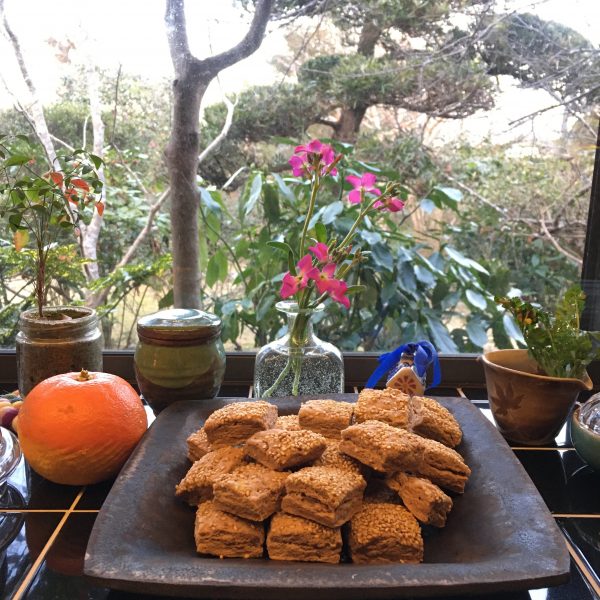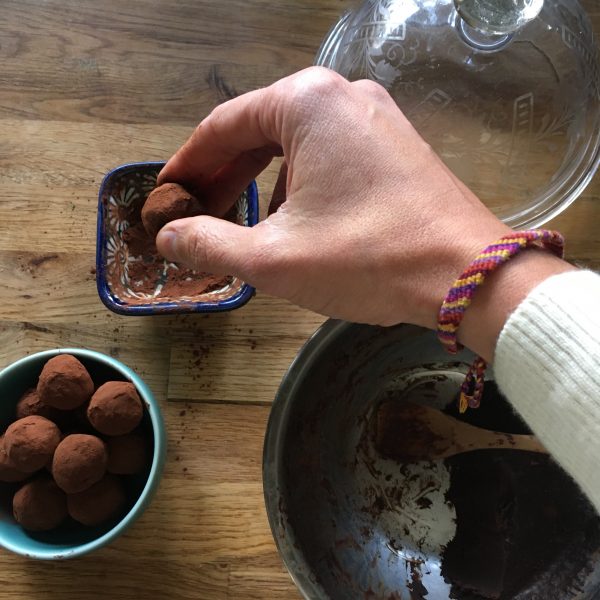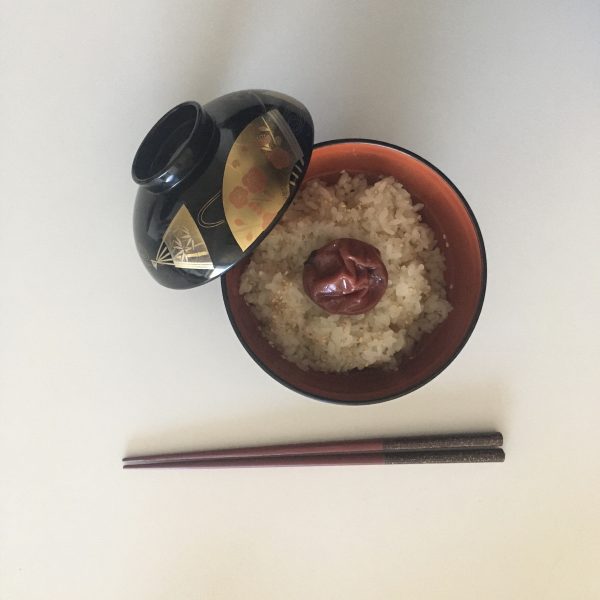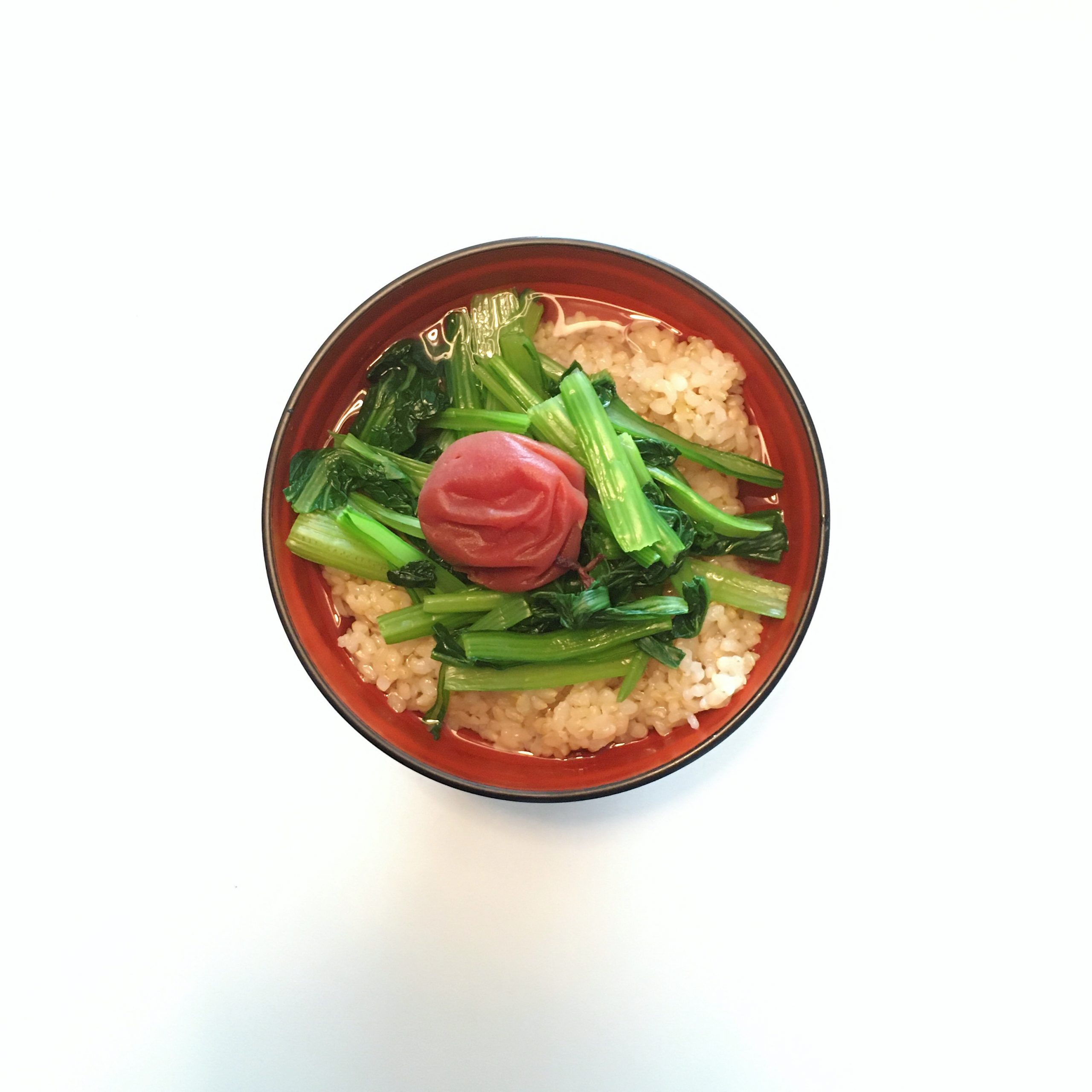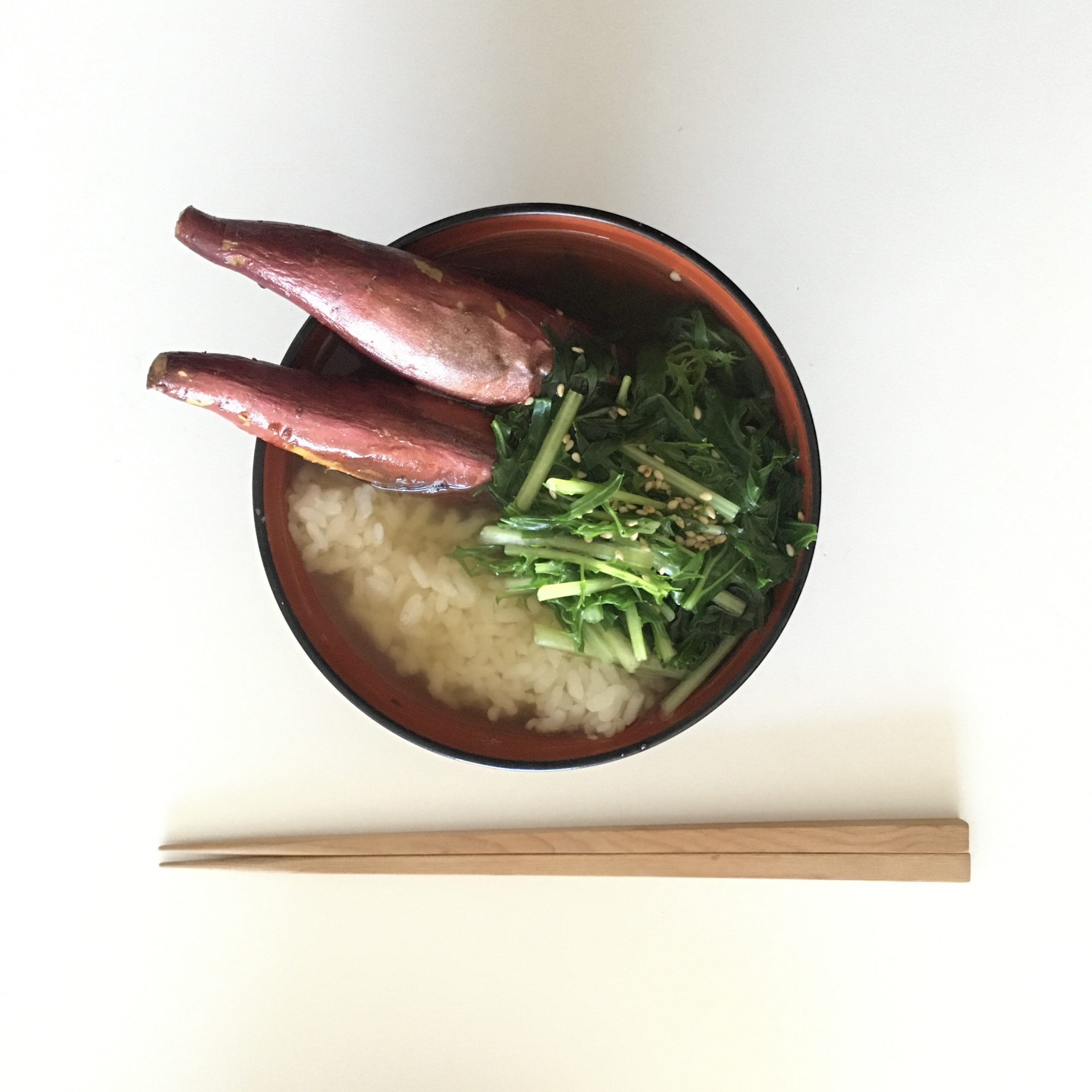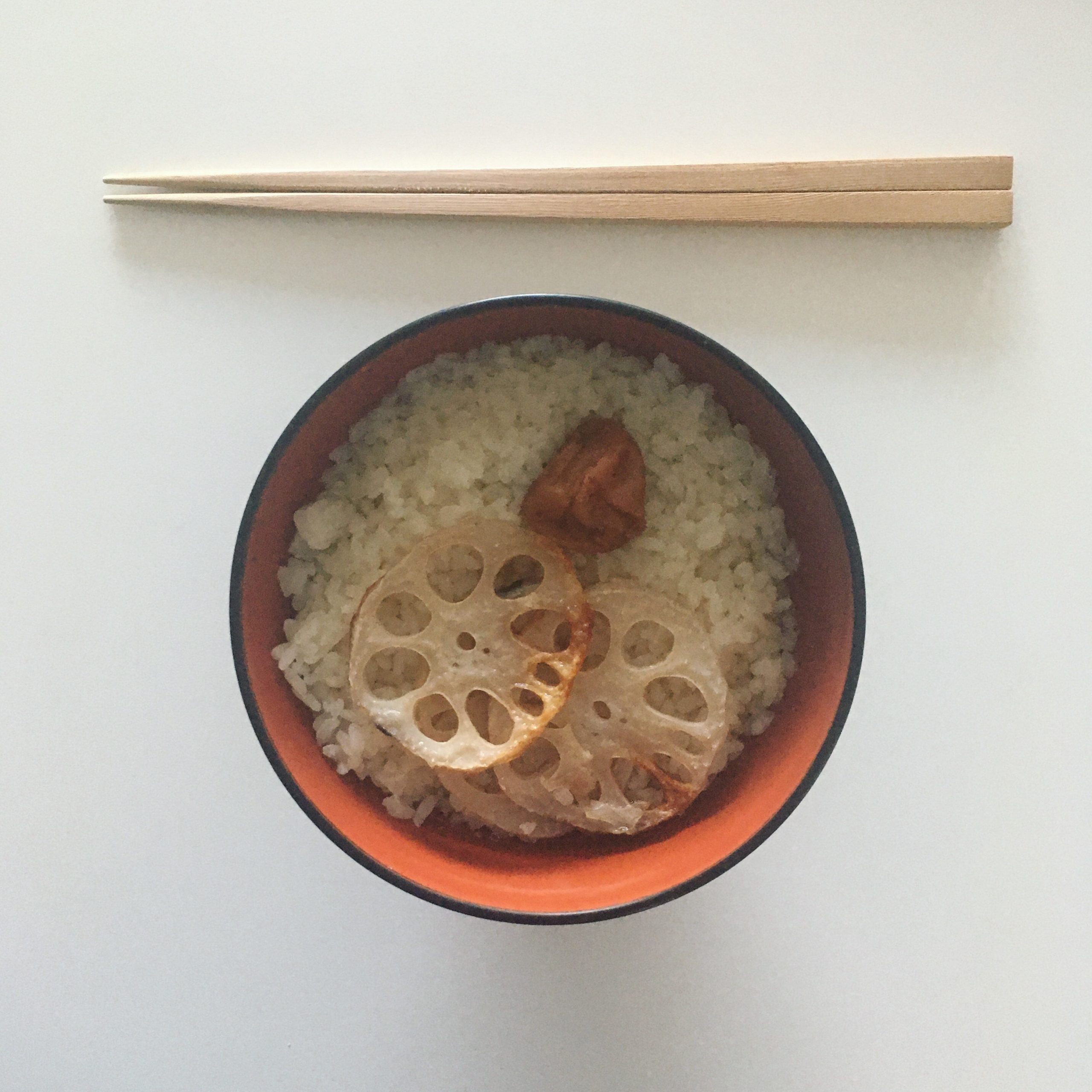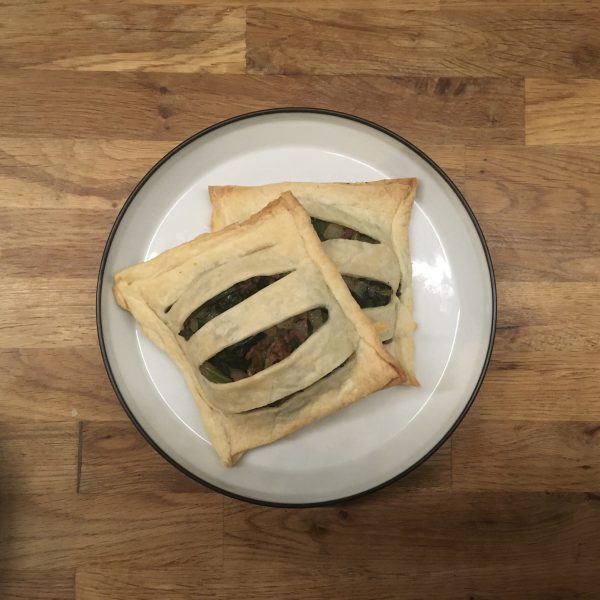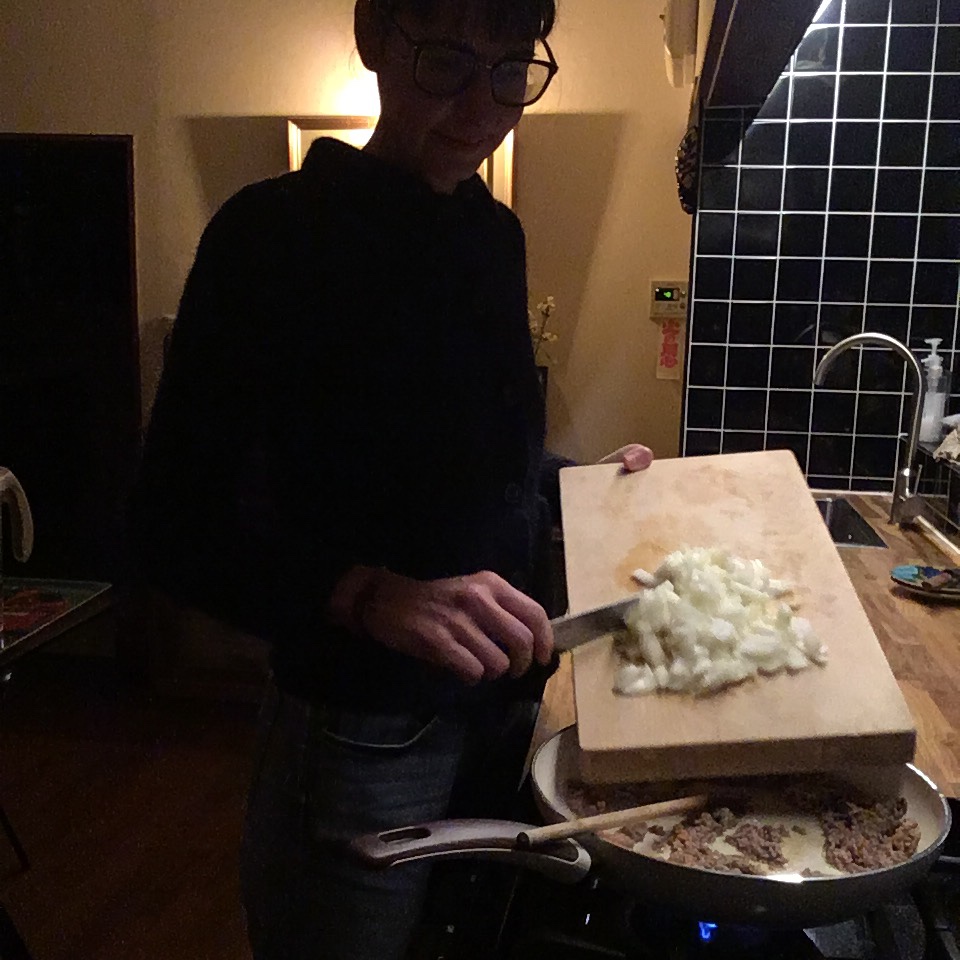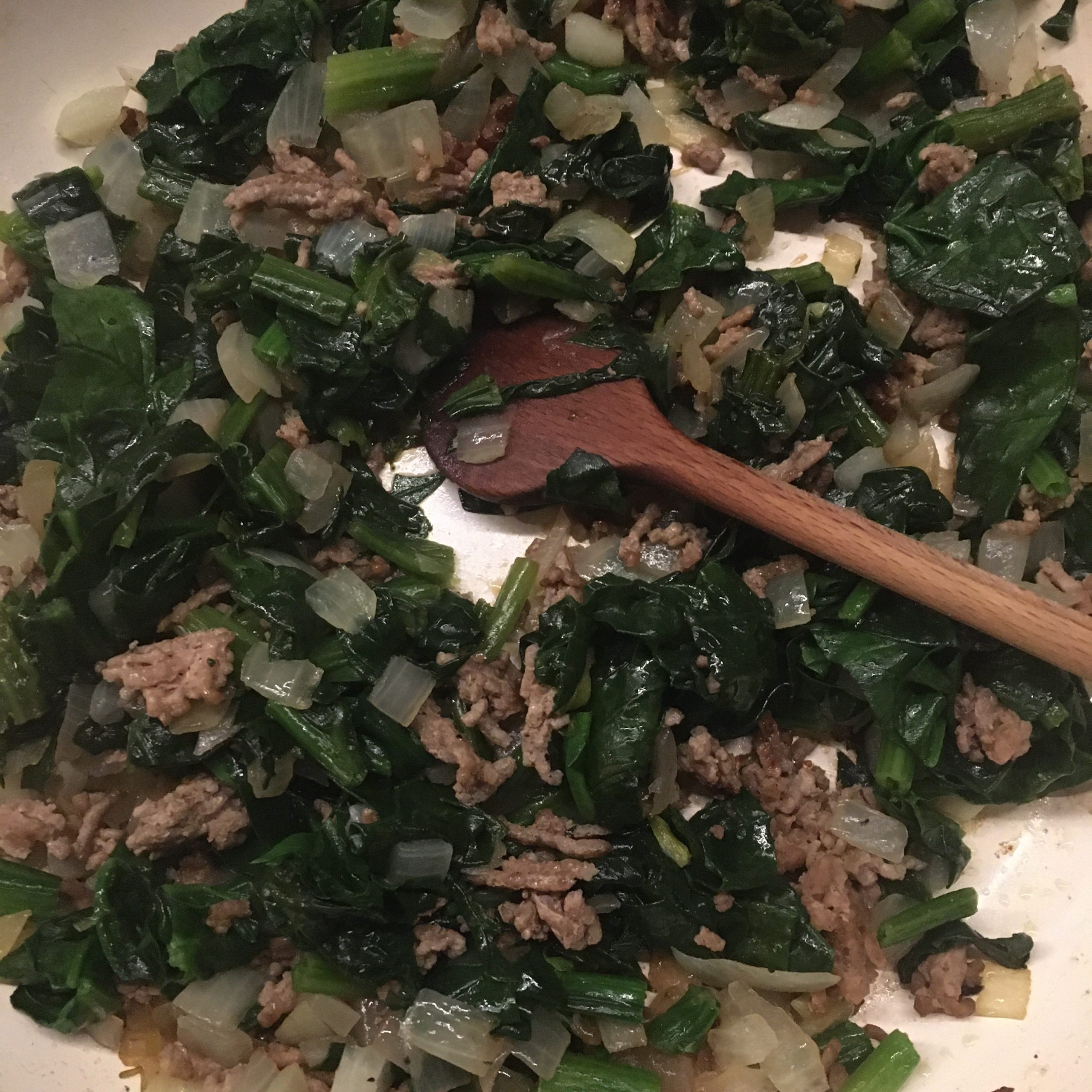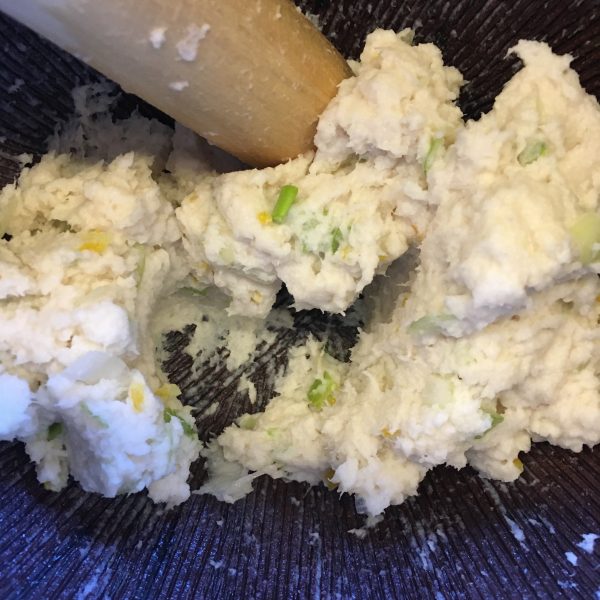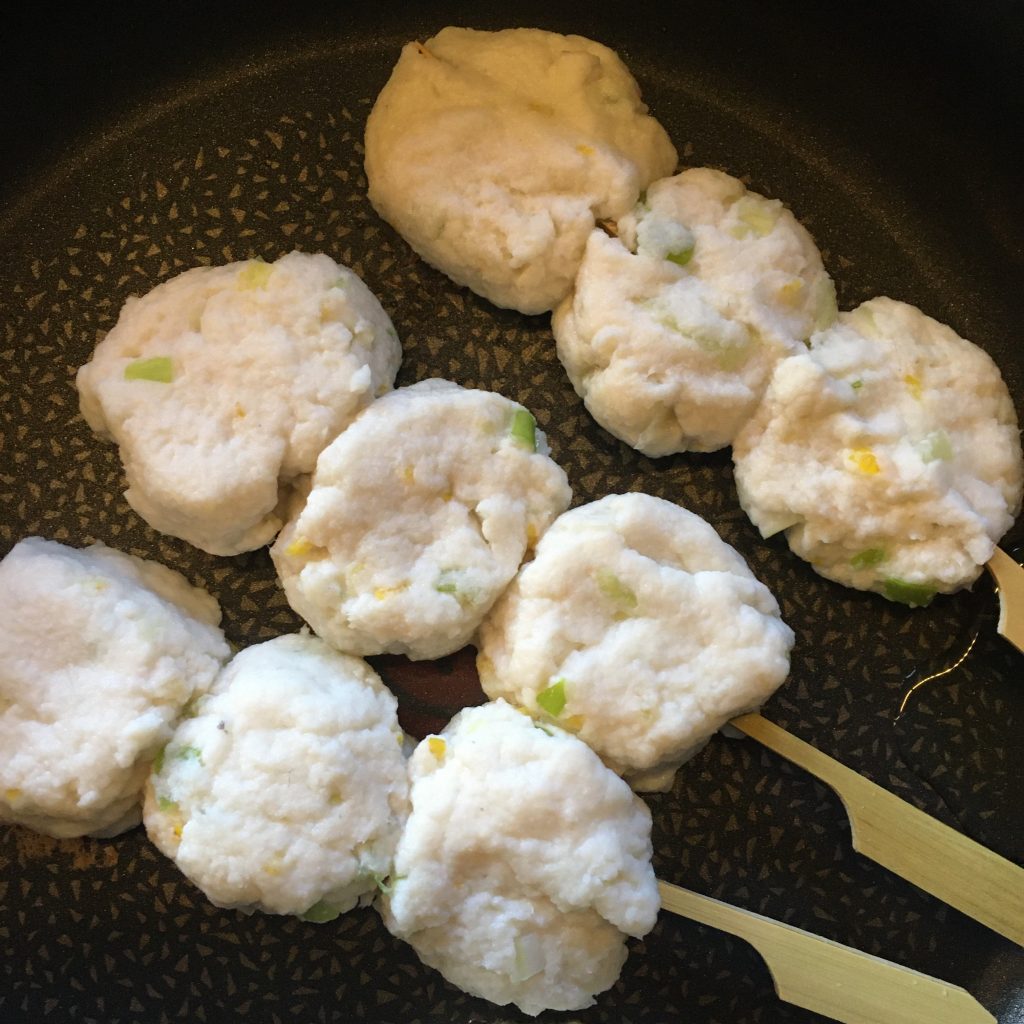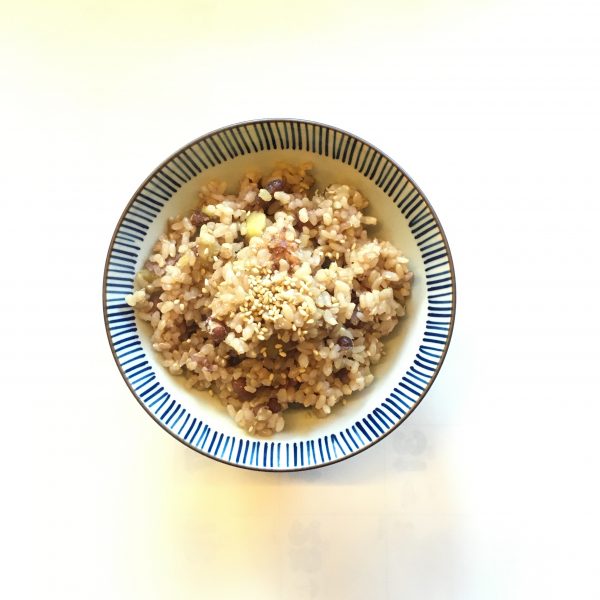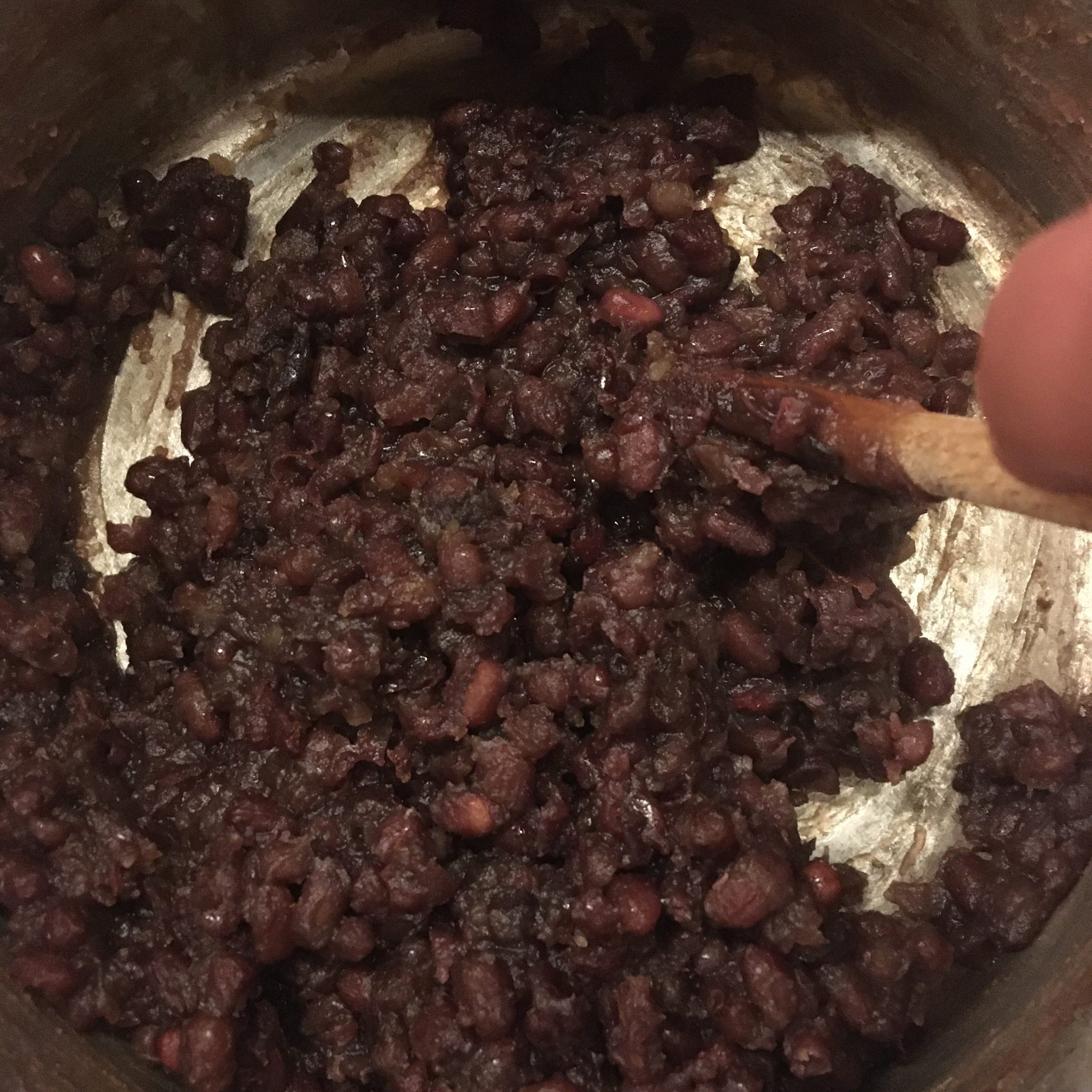The very special blend of spices, citrus fruits zest and sesame seeds of Maltese Qagħaq tal-Ħmira is still floating around me and inspires me a lot, but it’s not always that I can wait for my sourdough Lois to work slowly a dough which in this still cold season can be 12 to 24 hours… sometimes we need something to eat, QUICK!!!! So I came up with a scone version of Qagħaq tal-Ħmira… it may be a blasphemy to the true Maltese tradition, so I apologize for this rather crude recipe. But to my defense, this scone recipe brings in all the flavors of Qagħaq tal-Ħmira in only 25min: 10min of kneading & shaping and 15min of baking. The softness of the famous slightly brioché bread is replaced by a more crumbly dry scone one. Add jam, honey or butter to it, or it alone in bite version… it is truly nice! Really!!! Try it and tell me what you think!
Scones Qagħaq tal-Ħmira way
- 150g of flour
- 50g of butter
- 30g of sugar
- 1tsp of baking powder
- 1 pinch of salt
- 1tsp of ground cloves
- 1tsp of anis seeds
- 1/4 of orange zest
- sesame seeds for the topping
- a bit of water or milk
Pre-heat your oven at 180deg.
In a bowl mix all the ingredients except for the last two: sesame seeds and water/milk. Start kneading. Add a bit of water/milk while kneading until you obtain a homogeneous dough. Roll to 3cm thick and top with sesame seeds. Roll a little bit thinner and be sure the sesame seeds are well incrusted. Cut to the shape and size you want, and put on a sheet of cooking paper. Bake 15min, and enjoy as soon as you like.
Isn’t that super simple???
